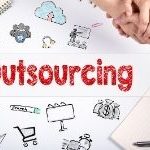Initiating unique ideas, maintaining sustainable goals, promoting goods & educating about niche are mandatory to develop a sustainable fashion business
Sustainability, ethical fashion, veganism, green vehicles, etc., have become the most popular trends of recent times as we become more environmentally conscious.
That said, it’s high time to implement your visions & concepts towards a sustainable fashion brand.
With all these organic, eco-friendly, green & cruelty-free fashions trending worldwide, it’s clear that the fashion industry’s views are taking a shift towards a new paradigm.

What Is Sustainable Fashion Business?
A sustainable fashion line is like any other fashion line, except it ensures sustainability in every business sphere. But first, let’s start with the idea of implementing sustainability.
You need to make sure your fashion business does not violate nature’s balance; you have to adopt eco-friendly processes from the start to the end. Most of the sustainable fashion brands are following this model.
The way you power your office, receive raw materials, process them, send them to the customers – all of those functions need to be sustainable & eco-friendly. This congruence is critical in developing a sustainable fashion business.
For instance, let’s say you maintained all greener processes to produce goods but then sent them in plastic packaging to your consumers. This certainly clashes with your sustainability vision.
Sustainable vs. Ethical Business
People often mix sustainability with ethical business, but these are two different aspects. When you are successful at making sure your business does not negatively impact the environment, you call yourself a sustainable business.
The ethical business ensures the health & wellbeing of the people & animals associated with your business.
Your brand can be both sustainable & ethical. Ensuring a sustainable business is challenging, considering you can’t control the sustainable manufacturing of raw materials.
The below-mentioned factors are vital in ensuring a sustainable fashion business.
1. Solid Entrepreneurial Concept
Sustainability in the fashion industry mainly depends on the sourcing of raw materials. However, you still have plenty to manage if your goal is to introduce a sustainable fashion business.
Without a unique concept, you can’t implement your green, eco-friendly idea into reality.
For starters, you can foster the idea of using yeast-based silk, leather alternatives, biodegradable products, and recycled marine plastic, etc.
Entrepreneurial approaches pave the way to introduce sustainable & ethical business in the fashion industry.
From sourcing to final delivery, you need to adopt sustainable methods that protect nature.
Generating new sustainable concepts can take time. But the credibility of your company & vision depends on how far you maintain these sustainable approaches.
People these days are keen to know what’s behind the curtain in eco-friendly products.
Starting from the sourcing, to labor rights management, to nature impact – they focus on everything. Besides, why will they pay good money for your products, if they don’t know how you deliver 100% green & eco-friendly products?
2. Setting Organizational Goals through Sustainability
Your concept & approaches will fail if you don’t know the value chain of production & organization. Ensuring sustainability & producing ethical products require firm knowledge about organizational structure.
Also, you need to have intensive experience in sourcing. Therefore, you need to collaborate with various start-up companies & ethical manufacturers to create your plan.
These collaborations can prove handy in initiating new methodologies to source ethical raw materials.
However, you need to foster these sustainable approaches both inside & outside of your company and, at the same time, keep your employees motivated.
By ensuring suitable working conditions, fair wages & regular incentives, you can encourage your workers to adopt sustainable practices throughout the supply chain.
External sustainable approaches include partnering with ethical companies and startups to initiate your sustainable goals.
3. Sustainable Sourcing
Sourcing is the most crucial factor of a sustainable fashion business. How you source materials will paint the picture of the final product that you are selling.
To source ethical goods, you need to find a manufacturer who doesn’t use pesticides.
Also, you need to avoid using harmful chemicals while dying. While selling, use biodegradable packets to wrap the product. All these processes combined will ensure you reach your sustainable goals.
However, with all these sustainable measures, you still need to focus on the apparels’ essential credibility.
If your cloth has low draping, unfriendly appearance, the sale will drop significantly.
That’s why try to be meticulous while sourcing & producing the clothes.
4. Educating the Audience
Once you have an excellent sustainable idea for manufacturing & selling products, your job has just started. You still need to penetrate the competitive fashion industry & make a name for yourself.
That said, you need to promote your company & your vision to the mass people. But initially, you may find only a specific niche responding to your goods.
That’s okay! Don’t be heartbroken just yet. You need to reach out to people & tell them what you are doing. Letting them have a transparent view of your company & ideology will appeal to your environmentally-conscious customer base. This will also broaden your company’s spirit.
Educating people about protecting mother nature is pivotal to your success. The good news is that the trend is in your favor. Today’s younger generation is highly environmentally aware and conscious about the products they use & how they impact nature.
So, you won’t need to make a lot of fuss about initiating the plan to the people.
5. Defining the Price
Here comes one of the most critical parts of the sustainable fashion business. The first thing you need to assure is that sourcing is ethical & eco-friendly.
That said, you need to have firm knowledge about the manufacturing of goods. If they use pesticides, how they produce raw materials are all essential factors that you need to consider carefully.
Maintaining these qualities will incur hefty prices. That’s why you need to promote your goods & make your customers aware of the reasoning behind these higher prices.
For instance, you need to determine who you will sell to. It can be to the consumers directly or in brick-and-mortar shops.
Your costs may double for wholesale selling as you have to consider the fabric, cut & sew panel, labels & other accessory costs. Hence, the price of the usual apparel item that sells at $25 will become $50.
There’s another way to make sure of a large profit margin. If your company is a startup, try to replace the ‘middleman’ to save the intermediary cost & eventually have a high-profit margin.
Final Thoughts
Creating a sustainable brand is the new normal. Assuring ethical sourcing & ensuring sustainability throughout the supply chain will help you develop a sustainable fashion business. We wish you all the success in your new sustainable fashion line that will no doubt contribute significantly to the wellbeing of people & the environment’s safety











